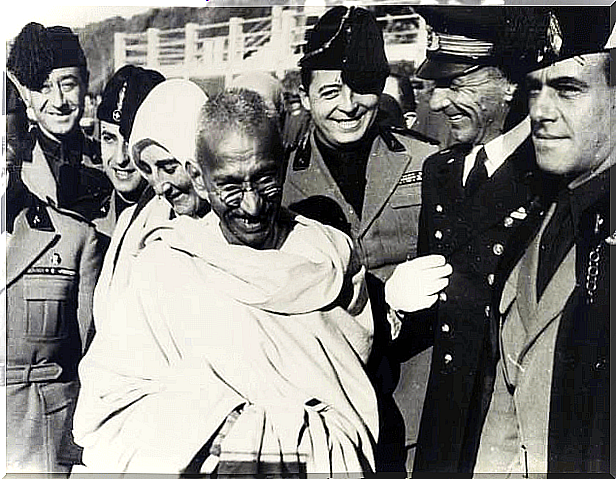Ahimsa, A Concept Of Integral Peace

The term ahimsa comes from Sanskrit and refers to a concept that advocates non-violence and respect for life. In this way, it implies not only not killing but also not causing physical or emotional pain to any living being, either through thoughts, words or actions.
The first appearance of this term dates from the 5th century BC. C. in the context of Indian philosophy, specifically in the Hindu Upanishads scriptures . However, it is also used in Buddhism and Jainism.
Ahimsa is also related to respect for the spirit, nature and cultures, that is, to lead a life in peace with everything that surrounds us. In some way, this term represents the congruence between what we say, think and do in relation to the act of giving love and being in harmony with the world. Let’s go deeper.
The concept of ahimsa in the West
Mahatma Gandhi was the forerunner of incorporating the concept in the West, who considered it as the common denominator of all religions, including Islam. However, over time it has been many leaders, who advocated for civil rights, who have implemented it as part of their doctrine.

Indeed, Martin Luther King, the highest representative of the civil rights of the Afro-American population, was influenced by this concept; being the standard bearer of pacifist protests against violence and poverty worldwide.
However, the inclusion of the term ahimsa in the West is being incorporated thanks to different practices such as yoga and meditation. In this way, many Westerners begin to dabble in new concepts, starting from being attracted to Eastern culture. In fact, the non-violent communication (NVC) developed by Rosenberg is a good example of this.
The meaning of ahimsa for Mahatma Gandhi
Mahatma Gandhi’s ideology on nonviolence stems from his inclination towards Hindu doctrine and Jainism.
Thus, for Gandhi, ahimsa indicates of course not to kill, but it also refers to the human capacity not to harm the other at all. Not cause any kind of pain, including psychological. To do this, you must have an absolute state of consciousness.
It also states that whoever practices ahimsa needs to have an absolutely peaceful mind, mouth and hands. On the other hand, it is valid to emphasize that for Hinduism the fundamental objective of non-violence is to avoid the accumulation of harmful karma. Therefore, the individual must practice a state of integral peace with himself and with the environment that surrounds him.
In this way, by sharing an absolute respect for life, an unconditional veneration for nature is established. The individual will be at peace with himself, with the other and with the environment where he lives. It is a principle of equality, respect and balance, in which nothing matters other than life in any of its forms or origin.

Ahimsa as a global and humanistic practice
Thinking of the other and not harming him is a principle of supreme equality. If it is related to a cultural and humanistic practice, respect for all cultures can be established equally. In this way, ethnocentrism would have no reason to exist.
For a long time, throughout human history, violence towards other cultures has been justified as inferior. In this way, ethnocentrism through a false notion of superiority, in addition to being a way of dominating, concealed a colonialist aim for unfounded reasons.
Establishing new parameters of cultural equality is a way to reduce the level of suffering and mistreatment reproduced for centuries at different scales: social, economic, political, educational, psychological and obviously cultural.
Thinking of the other as different, but at the same time equal to us, with the same rights for life, is a principle of equity, which must be carried out in an integral way if one wants to achieve what ahimsa advocates : peace integral on the face of the earth.









